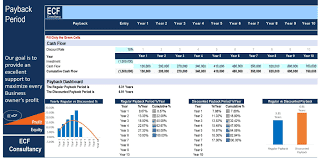Business Valuation Methods in Spreadsheet
Business valuation methods in a spreadsheet are helpful tools to assess your company value or a business you want to invest in. The three common business valuation methods are the Income Approach, Market Approach, and Asset Approach. These methods can be utilized based on the data available and what industry you belong to.
Three Types of Business Valuation Methods
1. Income Approach
For Income Approach, future earnings are either capitalized or discounted to their present value to compute for business valuation.
Two methods under the Income Approach are Capitalized Earnings and Discounted Cash Flow Valuation.
a. Capitalized Earnings
It is a valuation method that uses the rental income divided by the capitalization rate. A capitalization rate is the expected return for the investment unique for every industry. This approach is mostly used for real estate investment valuation.
b. DCF Valuation
DCF business valuation approach in spreadsheet utilizes the expected future cash flows, which is discounted to present value using a discount rate, commonly WACC (Weighted Average Cost of Capital). It considers the time value of money since it's expected that a dollar today is worth more than a dollar in the future.
Analysts and investors widely use DCF analysis since it is using future benefits in the evaluation. The future economic benefit is a primary factor that an investor or entrepreneur decides to pursue or invest in the project.
2. Market Approach
The market approach uses data from currently sold in comparable businesses or properties. Using the ratios and multiple of the comps, you can compute the value of the assessed business. It is easy to compute the market valuation method. However, there are not many public data available for comparable companies in your target area that you can use. Utilizing data outside your target might not be reliable to use. Also, there are no two companies that are the same.
Nevertheless, when data is available, market valuation reflects the market's pulse and what investors are willing to pay for the same property you are assessing. It is best to utilize the market approach alongside other valuation methods.
3. Asset Approach
The asset valuation method utilizes in-house information on the balance sheet. It considers total assets deducted by total liabilities. The asset approach reflects the tangible value of the company if it is sold today. However, it doesn't consider intangible factors such as the management influence and connections, copyrights, trademark, and other intangible assets that the business possesses.
Presented above are the most common methods of business valuation. Other valuation approaches are the times revenue method, liquidation value, replacement value, and earnings multiplier.
It would be more effective to utilize two or more valuation methods when assessing an investment or a company. Others can balance the flaws of one approach.



Comments
Post a Comment